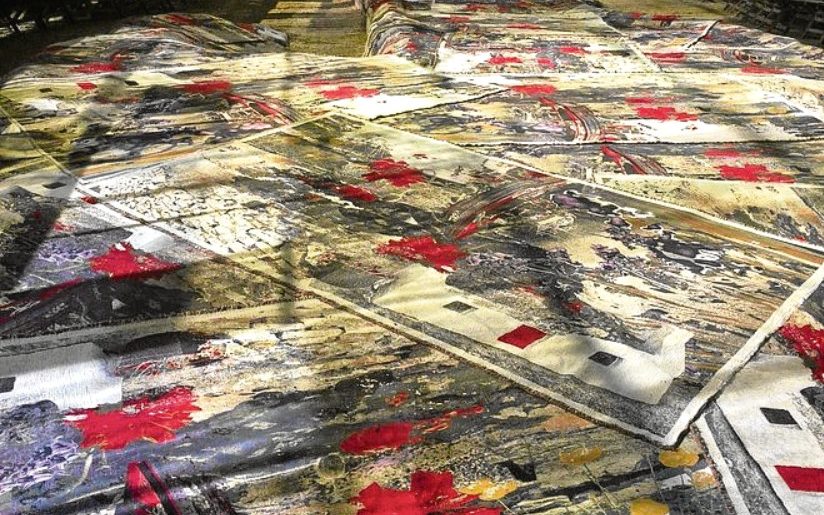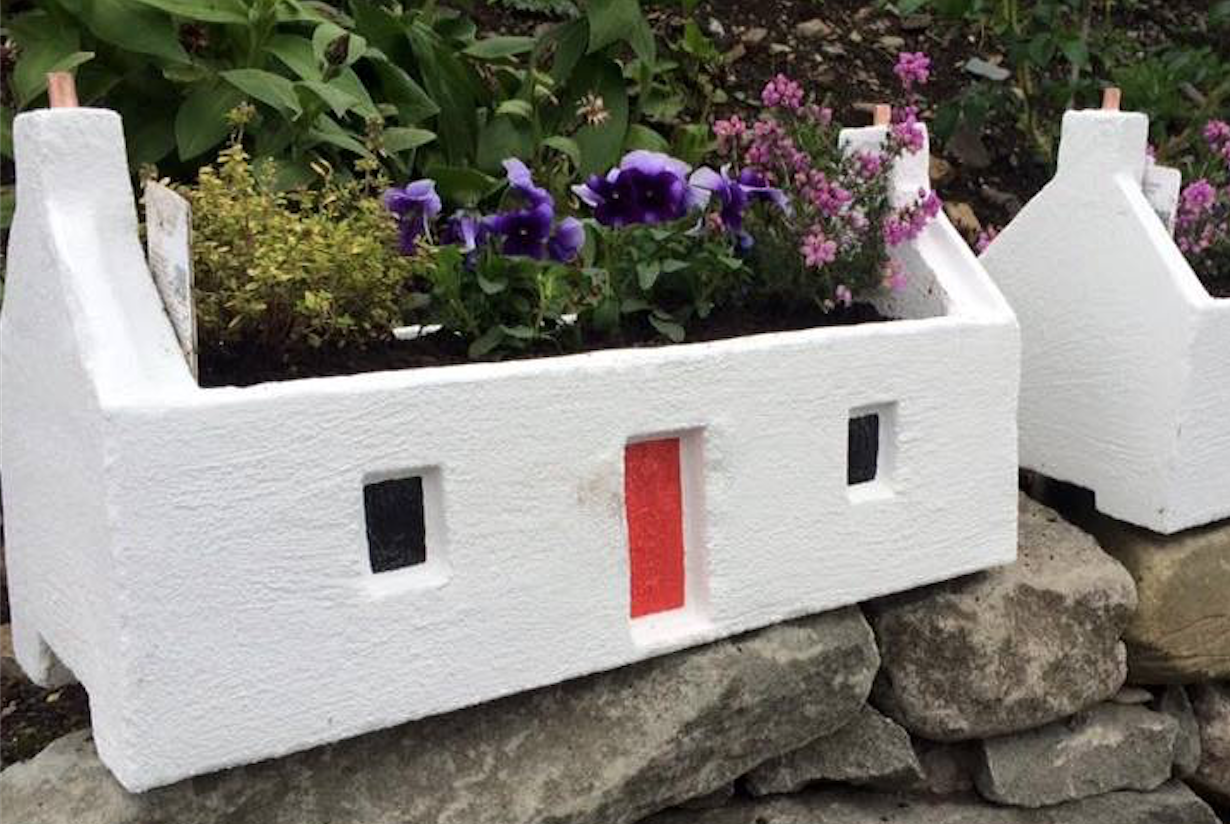
The McQueen rugs
Alexander McQueen is coming under fire for allegedly copying in connection with two recent collections. According to Luke and Kate Holt, the founders and operators of Greencroft Shetland, a Scottish garden company, the Kering-owned brand used an image of one of its most well-known products for the design of the runway for its Spring/Summer 2017 show and took things a step further by incorporating the same image into the lining of a coat in its Spring/Summer 2018 menswear collection, which the London-based brand showed during Paris Fashion Week in June.
According to Mr. and Mrs. Holt, consultants working for McQueen “came across one of [their] distinctive red doored [planters] and took a photo of it,” thereafter turning the photo into many the 300 individual rugs that were assembled to line the brand’s S/S 2017 runway and thereafter used it for a design in its S/S 2018 menswear collection.
Speaking exclusively to TFL last week, Mr. Holt said that he contacted Alexander McQueen after a friend alerted him to the similarities between his design and the image being used by McQueen. “They admitted to using a photograph of our product on the rugs,” says Holt of the London-based brand. However, “they claimed that they didn’t know who made the [original planter], so they are not at fault.”
Mr. Holt vehemently disagrees that McQueen is blameless. “People have made the association between our products and McQueen’s,” he says. “Our designs have been exploited to show off another designer’s products. They have used the rugs in the linings of coats, and so, they have profited directly from our product.” (Note: The jacket from the brand’s menswear collection has not yet been made available for sale. S/S 2018 garments and accessories are not due to be delivered to retailers until next year).

The planter at issue
According to a statement from a representative for Alexander McQueen: “We confirm that an image derived from a Greencroft planter appeared as part of a rug which was the backdrop to a fashion show in 2016. The reverse of the rug – in effect, an abstract design – was used for a coat in the men’s S/S 2018 show. However, we do not agree that this use is an infringement of rights in the planter.”
Legal or Not?
So, what rights do the Holts have in the planter, exactly, and do those rights provide any recourse for the alleged copying at hand? Well, it is noteworthy that the Holt’s company, Greencroft Shetland, has held a design registration in the United Kingdom since May 2014 that covers the design of a “Planter to hold soil in the shape of a croft house.”
As for whether those rights allow for the Holts to take action against McQueen in the case at hand, Eleonora Rosati, who specializes in intellectual property law mainly from a European Union and United Kingdom perspective, says, “It appears that both design and copyright protection might come into consideration” in the instance at hand.
Luckily for McQueen, Mr. Holt says that he and his wife do not “have the resources [to pursue legal action], as we are only a two-person team running a small craft business.” Nonetheless, they are not going down without a fight – at least on social media. The duo has been vocal about their battle with McQueen on the Greencroft Shetland Facebook page, writing earlier this month: “Today is the day that we ask for Justice from Alexander McQueen for using our planter picture without permission in S/S 2017 Paris catwalk. Help us protect Shetland design by sharing.”
If this all sounds a bit familiar, that is because Chanel was similarly met with criticism in December 2015 for allegedly copying garments that were shown as part of its 2015 Metiers d’Art collection. The Paris-based design house’s collection, which was meant to showcase and “honor the fine craftsmanship that its artisan partners bring to the house’s collections,” included roughly one hundred looks. Among them, said Fair Isle, Scotland-based knitwear designer Mati Ventrillon, were a number of garments copied from ones that Chanel’s research team purchased from her that summer.
After a few days of widespread attention surrounding the claims of copying, Chanel issued a statement, apologizing and detailing how it would remedy the copying on the heels of discussions with Ms. Ventrillon, the designer of the original garments.
According to a statement from the Paris-based brand: “Further to discussions that have allowed the parties to clarify this issue, Chanel will credit Mati Ventrillon by including the words ‘Mati Ventrillon design’ in its communication tools to recognize her as the source of inspiration for the knitwear models in question. Chanel recognizes that this situation resulted from a dysfunctionality within its teams and has presented its apologies. Chanel also recognizes the heritage and know-how of Fair Isle. Chanel wishes to emphasize that the House is extremely vigilant in terms of its respect for creativity, whether its own or that of others.”
McQueen is seemingly not taking a similar approach. While this battle almost certainly will not play out in court, Mr. Holt says, “What my wife and I would like is an apology, credit for the design and a goodwill payment.”










